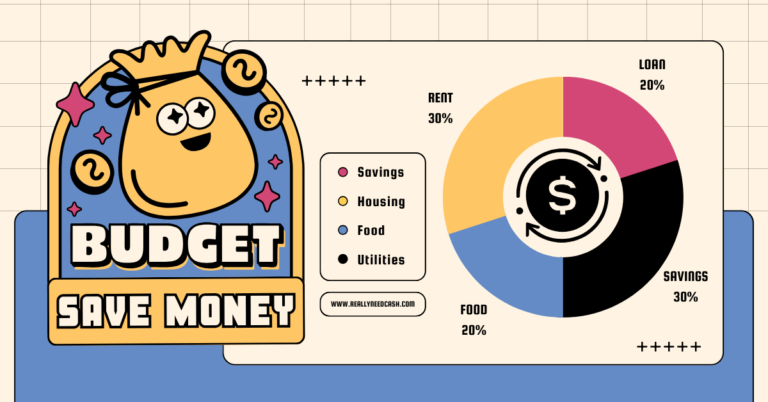If you’re saving for the future, a traditional savings account might not be an ideal option to consider.
Traditional savings accounts tend to offer very minimal interest rates (usually 1% or less), making them an ineffective option for people trying to grow their money.
Which Savings Account Will Earn You the Least Money?
Traditional savings accounts, with sub-1% interest rates, will earn you the least money. Savings accounts with basic, no-frills features offer minimal or no interest, making them among the least profitable options for saving money.
- Traditional Savings Accounts: These accounts are offered by brick-and-mortar banks, and usually have sub-1% interest rates.
- Basic, No-Frills Savings Accounts: Some banks will offer accounts with minimal or even zero interest, making them among the least profitable options for saving money.
- Accounts with Interest Rates Below Inflation: The worst one is any savings account with an interest rate lower than the inflation rate will result in your savings losing value over time.
Compounded interest outperforms simple interest, and beware: if your low-yield account can’t beat inflation, your savings lose value over time.
Therefore, I advise people looking to maximize their earnings over time to go for alternatives like high-yield or online savings accounts. These options will help you end up with higher returns and more potential for growth!
To get a full list of the best-performing savings accounts, click here.

What are the Most Common Types of Savings Accounts?
You will find several options when you go to open a savings account in your name. But are they all worth it? What options should you choose if you want to maximize your earnings?
Here’s the list of most commonly used savings accounts. You can pick your best fit depending on your financial goals and preferences.
1. Traditional savings account
As I mentioned earlier, traditional savings accounts will make you little to no bucks! Most of these accounts offer interest rates as low as 0.01%.
So, if receiving good returns is your main goal, traditional savings accounts won’t be much help.
If traditional savings accounts earn you the least amount of money and charge high maintenance fees, why do people even consider them?
Because of the banking culture!
You can withdraw money any time you want and support will be there whenever you need it.
| Pros | Cons |
| It’s easy to access money | Very high maintenance fees |
| You can discuss your queries with the bank face-to-face | Low returns and interest rates |
2. High-yield savings account
A high-yield savings account is a viable option when you are trying to maximize your earnings. Since these accounts are offered by online banks, you are usually charged little to no maintenance fee. Not only that, starting a deposit is also not a big concern with these accounts.
I have researched most of these high-yield accounts, and they have no policy for an initial deposit. However, some require you to pay as little as $100 to get started.
But there is also a con you should know about.
With high-yield savings accounts, you can’t discuss your queries with the bank face-to-face as they don’t operate in a physical building.
| Pros | Cons |
| High interest rates | No physical branch |
| Little to no deposit fees | Accessing money is difficult |
| Little to no maintenance fees | Safety concerns if the bank isn’t FDIC-insured |
Please note that it’s important while opening an online savings account to check if your bank is FDIC-insured. This will help you rule out potential risks and safety concerns!
3. Money Market Account
Money market accounts are similar in nature to savings accounts. However, some features make money market accounts a more worthwhile option.
For instance, you get debit cards and checkbooks with money market accounts. Your money is more secure, and you have 24/7 access to your funds.
Both online banks and traditional banks offer money market accounts, but I would suggest you go for an online option. Why?
Because you will get a higher return at the cost of less maintenance fee!
However, initial deposits may be higher with these accounts. Most banks charge a $100-$1000 fee for opening an account. But there are also free options that you can explore.
| Pros | Cons |
| Access to a physical branch | High initial deposit |
| Features like debit cards and checkbooks | |
| Easy access to funds | |
| High interest rates |
4. Certificates of deposits (CDs):
Certificates of deposits are excellent savings accounts with no maintenance fee and a high interest rate. The only problem is, your money will be locked in for a set period of time. If you are saving for the long term, these accounts can be a bounteous option.
CDs are usually preferred when maximizing earnings is the goal because they pay a fixed and high interest rate.
| Pros | Cons |
| High interest rates | High initial deposits |
| Fixed interest rates | Non-competitive interest rates on shorter terms |
| No maintenance fees | Penalties for early withdrawal |
| Longer account terms |
Which savings account will earn you the most money?
After looking at all the facts, I would say CDs are excellent for earning the most money. But if you aren’t comfortable depositing money for a set period and want easy access to your funds whenever you want, go for a money market account.
But since we are talking about earning the most money, there is no better option than a CD. It pays more than high-yield savings and money market accounts and increases your chances of getting a good return on your money.
High-Yield Savings Accounts Comparison
| Savings Account Name | APY |
|---|---|
| SoFi Checking and Savings | 4.60% |
| Citizens Access Savings | 4.50% |
| Bask Interest Savings Account | 5.10% |
| Synchrony Bank High Yield Savings | 4.75% |
| CIT Bank Platinum Savings | 5.05% |
| Upgrade Premier Savings | 5.07% |
| Discover Bank Online Savings | 4.35% |
| Popular Direct | 5.40% |
| BrioDirect | 5.35% |
| Ivy Bank | 5.30% |
| TAB Bank | 5.27% |
| TotalDirectBank | 5.26% |
| Milli* | 5.25% |
| Newtek Bank | 5.25% |
| UFB Direct | 5.25% |
| Valley Direct | 5.25% |
| Evergreen Bank Group | 5.25% |
| Vio Bank | 5.25% |
| CFG Bank | 5.25% |
| EverBank (formerly TIAA Bank) | 5.15% |
| FNBO Direct | 5.15% |
| RBMAX | 5.15% |
| Bread Savings | 5.15% |
| Western State Bank | 5.15% |
Common Misconceptions and Myths About Savings Accounts
I have heard many myths about savings accounts, and it’s time to debunk some. It’s important for you to understand what savings accounts do and don’t do before you decide to open one.
So, let’s take a deep dive and separate facts from myths!
Myth 1: You can’t maximize your earnings with a savings account
If you have heard this statement before, know that it is false! As I have discussed in this article, savings accounts can give you pretty good returns. You just need to know where to invest your money.
Traditional accounts with their uninspiring APYs may seem meritless, but good money market accounts and high-yield accounts can give you a 4-5% interest rate with no maintenance fee.
Myth 2: You can’t access your funds in a savings account
While certificates of deposits don’t allow you to access funds for a fixed period, there are other types of savings accounts that have no such rule. For instance, in a high-yield account, you can withdraw your money any time you want.
These accounts are good for keeping your emergency funds safe while growing your money for the better.
Myth 3: Savings accounts offer a fixed interest rate
This statement is true in the case of CDs, but that is an exception. You have high-yield accounts, money market accounts, and traditional accounts–all of them offer variable interest rates.
The APY your savings account pays fluctuates depending on the situation of the Federal Reserve. It can increase or decrease according to the federal fund rates.
Here is a piece of advice: if you have stopped funding your savings account due to non-competitive interest rates, consider checking your account’s APY again You might find some surprises if you are lucky!






